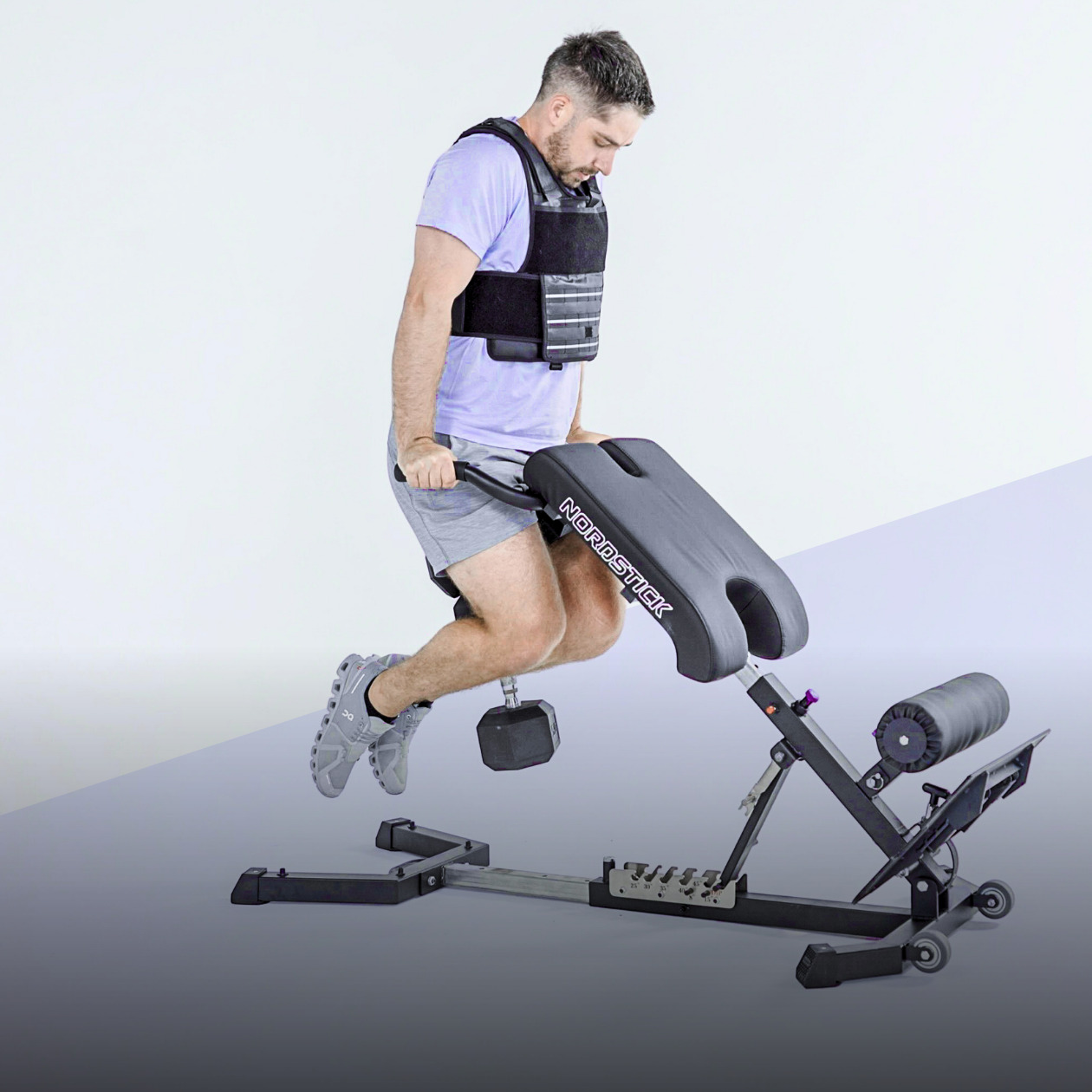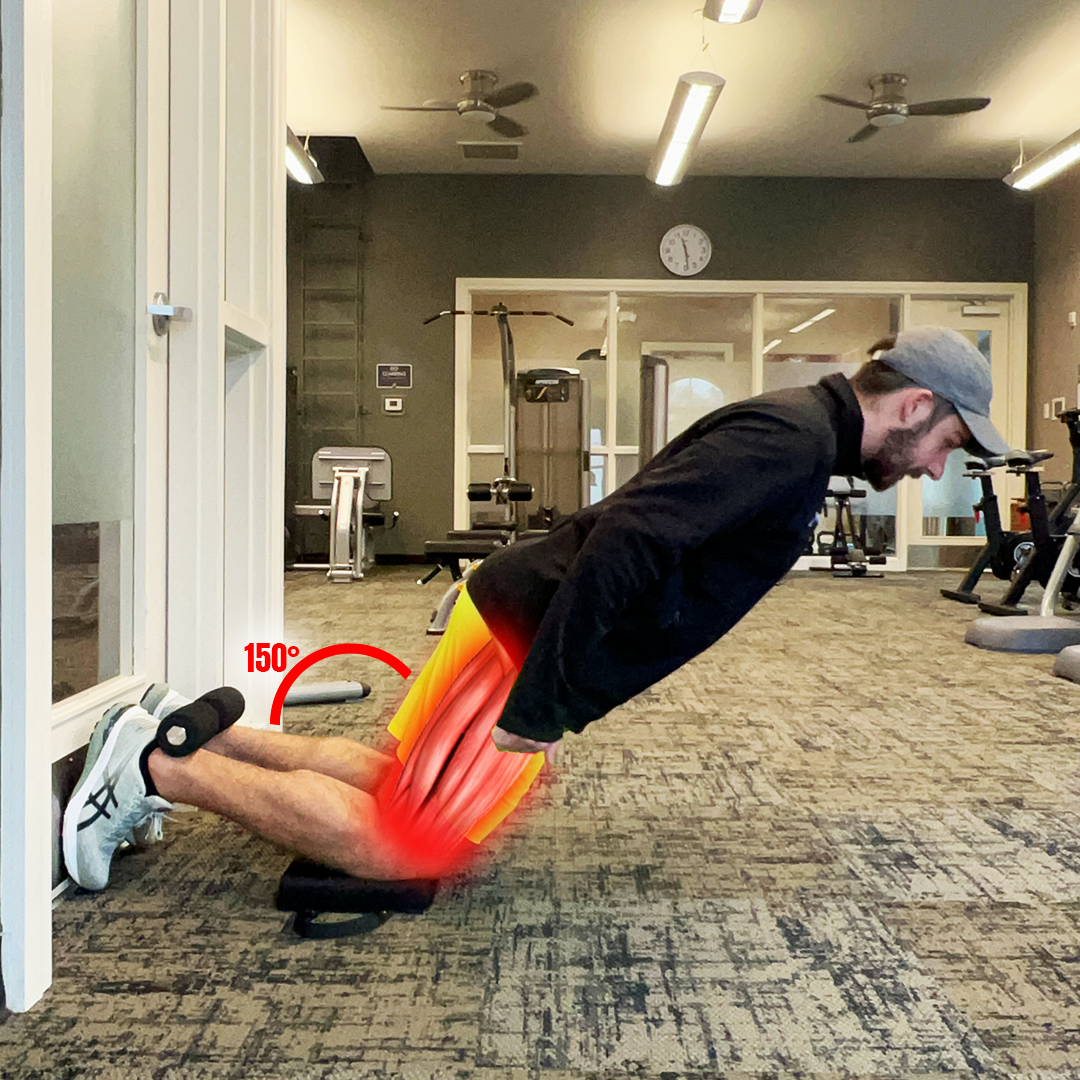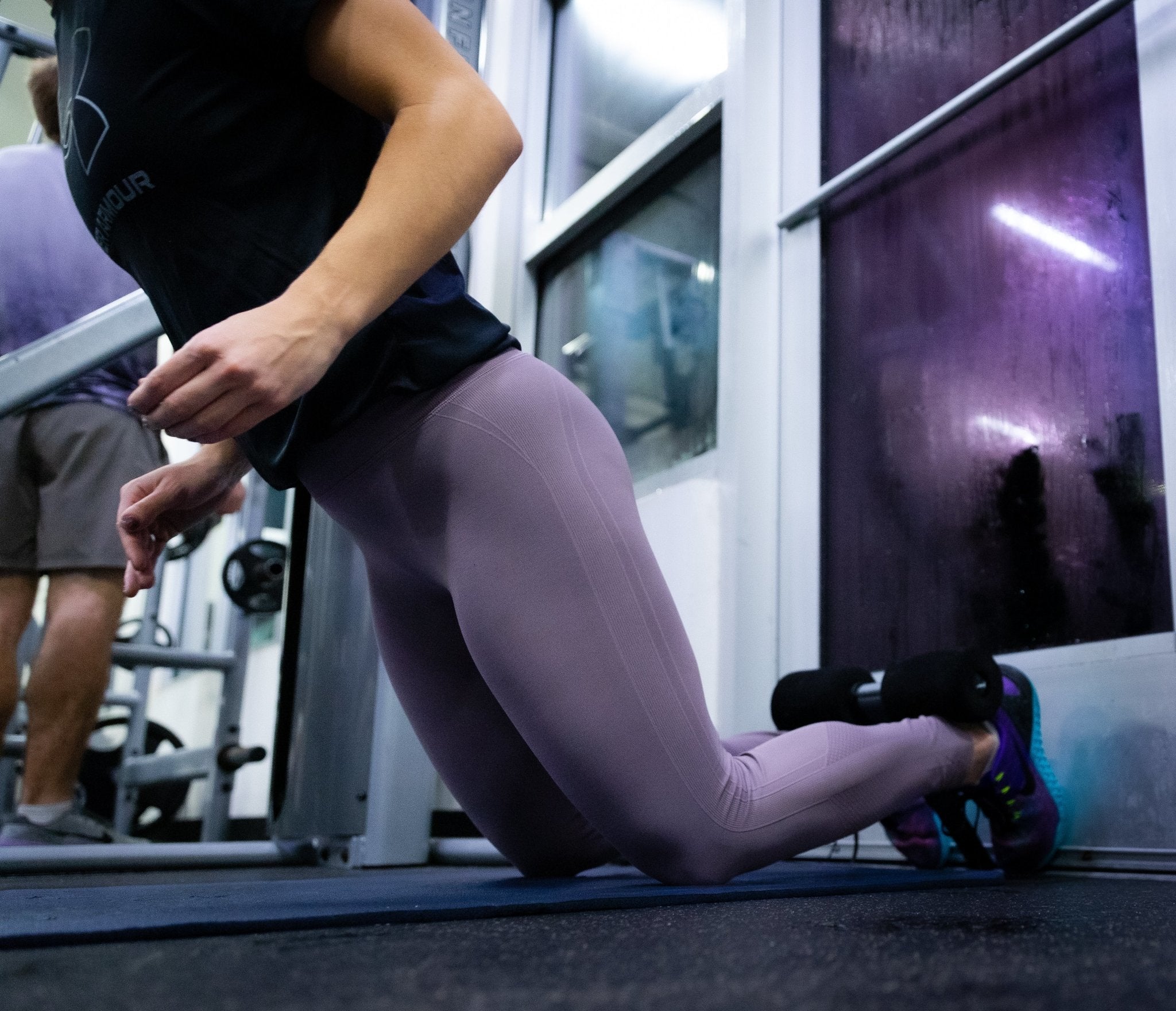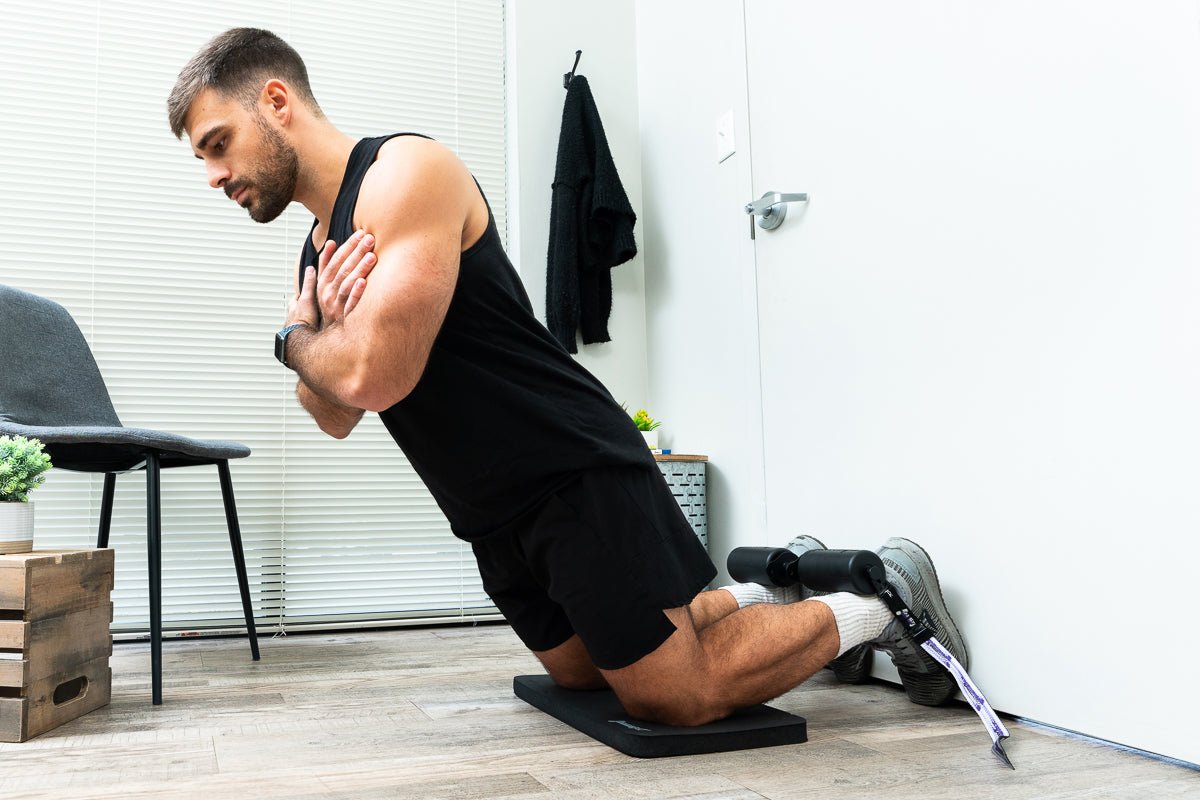In our first post, we covered the history of the Nordic curl. The natural course is to move into a discussion of the movement itself.
Nordic hamstring curls involve pinning the feet down while kneeling and slowly lowering the trunk and legs simultaneously to the ground. This is followed by a slow ascent to the original kneeling position in the reverse of the first phase of the movement.
The Nordic hamstring curl is primarily known as an eccentric-type exercise and this is often what most people focus on when discussing the movement. This eccentric training is a key component of the nordic hamstring exercise. While that is true, it misses some important aspects that make the movement so special. To understand why we need to discuss some fundamentals about muscle function.
It is generally accepted that there are two major types of muscle contraction: isometric and isotonic
Of the isotonic exercise there are the following subtypes: isokinetic, concentric, and eccentric
Isokinetic exercise is only encountered under very specific conditions so we will briefly focus on the other three. It is helpful to understand that these types of exercise are named describing the underlying behavior of the functional muscle unit at the cellular level. Let’s break down the names.
The Differences Between Isometric, Concentric, and Eccentric Nordics
It is generally accepted that there are two major types of muscle contraction: isometric and isotonic.
Of the isotonic exercise there are the following subtypes: isokinetic, concentric, and eccentric.
Isokinetic exercise is only encountered under very specific conditions so we will briefly focus on the other three. It is helpful to understand that these types of exercise are named describing the underlying behavior of the functional muscle unit at the cellular level. Let's break down the names.
Iso - From the Greek isos, meaning equal
Metric - Comes from the greek word metria, meaning measure
Con - Latin for towards or together
Ecc - From the Greek ek, meaning out of
Centric - From the Latin centria, meaning center
Tonic - From the Latin tonia, meaning tone (meaning muscle contraction)
Therefore, each word describes the physiologic action of the muscle as the movement is occurring.
Concentric meaning the muscle fibers are shortening (moving towards the center), eccentric means the muscle fibers are lengthening (moving away form the center), isometric means that the muscle fibers are not changing in length.
All human movement is composed of combinations of these types of contractions. However, because of our generally uniform structure as human beings, certain muscles generally express one of those contraction types over the others during common movement.
Every muscle has two main attachments between which the muscle fibers are oriented. These are fixed points, therefore every muscle can only be stretched a certain amount relative to its resting length before it is injured. Muscles are generally well able to exert force when they contract while between 80-120% of their resting lengths. If they are too stretched or two slackened and asked to contract, they are less able to produce force. Because of this our muscles will always be weaker when trying to exert force in a stretched position compared to a neutral position because… physics.
However, with training, we can improve our ability to exert force at that lengthened state. Concentric hamstring strength training and eccentric knee flexor strength are crucial in this regard. That brings us to what is unique about the Nordic curl.

The Nordic curl is a predominantly eccentric type exercise that targets the muscles on the posterior aspect of the thigh. It just so happens that these muscles, our hamstrings, are generally responsible for eccentric type leg movements in daily life. In other words, they often are responsible for slowing us down when we walk, run, and jump. Hamstring injury and hamstring injuries are common when these muscles are not properly conditioned. They also tend to be injured when they are asked to contract in positions where they are relatively stretched out (see the images below). The biceps femoris long head is particularly susceptible to hamstring strain injuries in such scenarios.
The Nordic curl is a predominantly eccentric type exercise that targets the muscles on the posterior aspect of the thigh. It just so happens that these muscles, our hamstrings, are generally responsible for eccentric type leg movements in daily life.
In other words, they often are responsible for slowing us down when we walk, run, and jump. They also tend to be injured when they are asked to contract in positions where they are relatively stretched out.
The hamstrings also cross both our hip joint and our knee joint and therefore contribute to movement of our pelvis, thigh, and lower leg.
A notable feature of eccentric exercise is that it is shown to improve muscle length (i.e. flexibility) just as effectively as stretching over a six week period.
In fact, this study compared Nordic hamstring curls to stretching and found that both improved muscle length. But an added bonus was that the group doing Nordic curls also got stronger!
Improvement in muscle length is a quality of all eccentric exercise, but the Nordics are unique in that for most people they start out as a maximal eccentric exercise.
Strength and conditioning principles tell us that the best way to cause adaptation is to train at high levels of effort. For the novice Nordic curler who can make it halfway or less through the curling motion, performing even a modified Nordic curl forces them to overall work at a high relative effort.
Furthermore, repeatedly training up to and past the sticking point at which they can no longer control the descent of the torso, addresses the strength deficiency at that specific joint position.
Nordic curls are straight shooters, you know exactly where you stand with them. In other words, you can’t cheat and you can’t hide from your weakness while lowering yourself during a nordic curl.

“Wait, what about the second phase of the movement?!” I’m so glad you ask because that is where the beauty of the Nordic is.
Because Nordics are such powerful eccentrics, it can be easy to overlook that during a full Nordic hamstring curl eccentric, concentric, AND isometric contractions all occur.
At the bottom of a Nordic curl, (we’ll consider that to be whatever the point at which you can’t descend further and reascend without upper extremity assistance) the hamstrings are being forced to produce tremendous force while being stretched maximally, maintain that force while maintaining the maximal stretched position, and then exert more force to move from a maximally stretched position to a neutral position as you pull yourself back up.
You are effectively stretching your hamstrings out as far as your brain will let you and then exerting maximal tension by contracting them in every possible way they can contract. If you haven’t already made the connection, the not-so-secret secret to the Nordic curl is that they force you to train your hamstrings muscles intensely, eccentrically, concentrically, AND isometrically through their entire range of motion. This is a stimulus that your body cannot ignore and will adapt to if conditions are right. More on that in our next post on how the body adapts to Nordics.
As a final point, some astute readers might be wondering how performing a high intensity hamstring curl on a machine is different conceptually from the Nordic. Aside from the obvious simplicity of the Nordic curl (especially when using the Nordstick) versus the bulky contraptions that we use for seated hamstring curls, remember that we mentioned that the hamstrings are two joint muscles.
When doing a Nordic curl the hamstrings have to work extra hard along with the glutes to keep the trunk from inclining forward. This additional demand is not there during the seated curl. So next time you think yourself strong while slamming out reps casually as you sit there on the hamstring curl machine, take a moment to contemplate your life. Choose Nordics instead.
Next up we’ll discuss the evidence regarding injury prevention. Happy curling!
References
- Business Bliss Consultants FZE. (November 2018). Effect of Nordic Hamstring Curls on Eccentric Hamstring Strength and Flexibility. Retrieved from https://ukdiss.com/examples/nordic-hamstring-curls-strength-and-flexibility.php?vref=1
-
British Journal of Sports Medicine. (2020). Including the Nordic hamstring exercise in injury prevention programmes halves the rate of hamstring injuries: a systematic review and meta-analysis of 8459 athletes. Retrieved from https://bjsm.bmj.com/content/early/2020/06/07/bjsports-2019-101750
-
Physiopedia. (2021). Nordic Hamstring Curl Exercise. Retrieved from https://www.physio-pedia.com/Nordic_Hamstring_Curl_Exercise
-
Fitness Volt. (2019). Nordic Ham Curl Exercise Guide: Muscles Worked, How-To, Variations, and Common Mistakes. Retrieved from https://fitnessvolt.com/nordic-ham-curl-exercise-guide/
-
Stack. (2019). Nordic Hamstring Curls: Why Everyone Should Try This Ultra-Challenging Exercise. Retrieved from https://www.stack.com/a/nordic-hamstring-curls
-
Garage Gym Reviews. (2018). How to Do the Nordic Curl: Advice From An Expert. Retrieved from https://www.garagegymreviews.com/how-to-do-the-nordic-curl







































Leave a comment
This site is protected by hCaptcha and the hCaptcha Privacy Policy and Terms of Service apply.